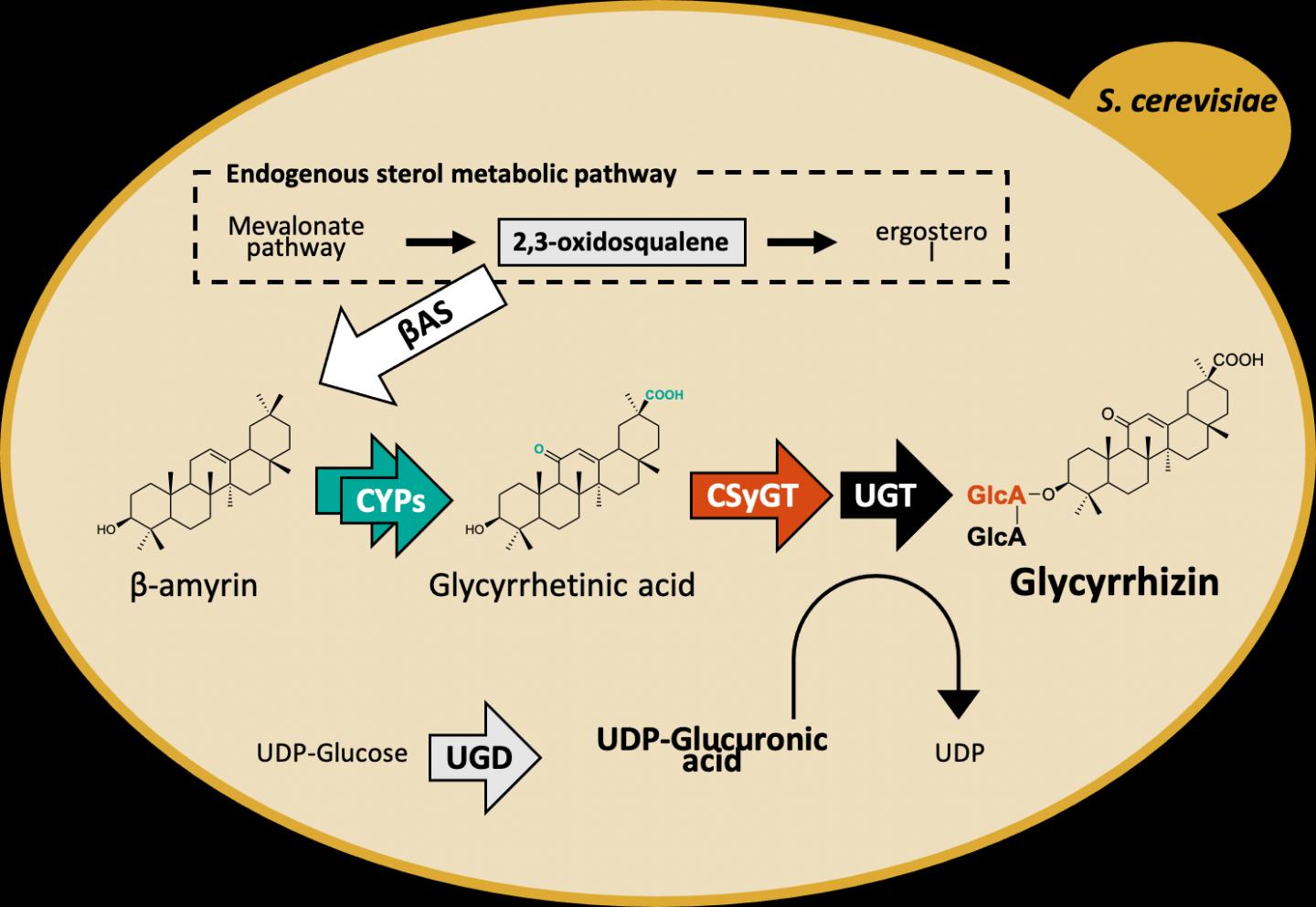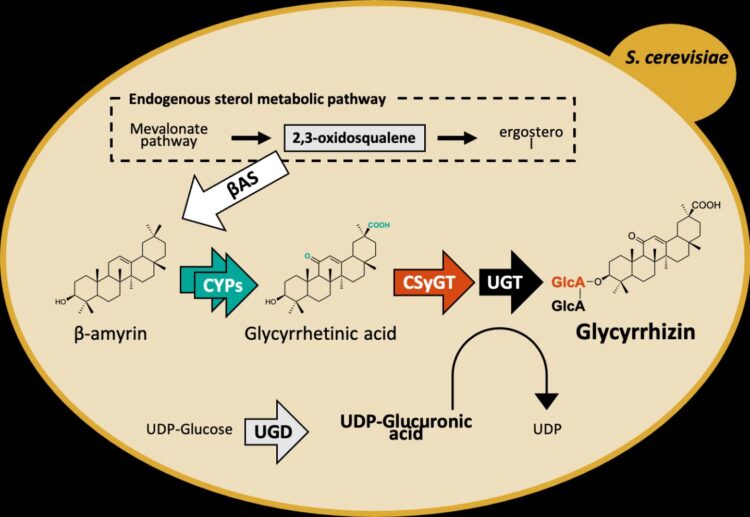Osaka University-led research team discovers new enzyme, opening novel routes for producing a family of valuable chemicals with medical and food uses

Credit: Osaka University
Osaka, Japan – Many plants, including legumes, make naturally occurring chemicals called saponins. For example, the medicinal plant licorice produces the saponin glycyrrhizin, a potent natural sweetener that also has antiviral and other pharmacological activity. Soyasaponins, found in soybeans, have anticarcinogenic and antioxidant properties.
But exactly how plants make these useful products was unclear. Now a research team at Osaka University, in collaboration with National Agriculture and Food Research Organization (NARO), RIKEN, and Chiba University, has uncovered a vital link in the complex biochemical pathway for saponin synthesis. Their discovery paves the way for improving the commercial production of these high-value products. The team recently published the study in Nature Communications.
Osaka University researchers Soo Yeon Chung and Hikaru Seki, with collaborators in NARO (Masao Ishimoto et al.), RIKEN, and Chiba University, studied co-expression gene network of saponin synthesis using technologies including gene cloning and sequence comparisons, coupled with biochemical analyses in mutants and genetically modified plants of a model legume species. They discovered a new enzyme in the CSyGT family that are similar in structure to the enzymes producing cellulose in plant cell walls. Unexpectedly, they showed that the new member of the family was responsible for a key step in saponin synthesis, where a sugar molecule is attached to the triterpenoid backbone. This discovery challenged the generally accepted view that a different class of enzyme was probably involved in this step.
They went on to insert the gene for the newly discovered CSyGT enzyme, along with genes for other steps in the biochemical pathway, into yeast cells. The engineered cells successfully produced glycyrrhizin from simple sugars, indicating a potential route for industrial manufacture of valuable saponins by growing yeast cells on a large scale.
“Our multi-disciplinary team showed, for the first time, that this type of enzyme is important in saponin synthesis,” says corresponding author Toshiya Muranaka. “Our results fill a gap in previous knowledge and also challenge the accepted view of how this pathway for biosynthesis operates.”
“We showed that yeast cells can make glycyrrhizin when we insert the necessary plant genes,” explains Chung. “This offers the prospect of new ways to produce these valuable substances commercially, and to generate completely novel types of saponin that might have further beneficial applications in medicine or the food industry.” Seki adds, “producing the chemicals in cell cultures would also reduce the need to deplete natural plant resources and so help to meet the vitally important Sustainable Development Goals.”
###
The article, “A cellulose synthase-derived enzyme catalyses 3-O-glucuronosylation in saponin biosynthesis,” was published in Nature Communications at DOI: https:/
About Osaka University
Osaka University was founded in 1931 as one of the seven imperial universities of Japan and is now one of Japan’s leading comprehensive universities with a broad disciplinary spectrum. This strength is coupled with a singular drive for innovation that extends throughout the scientific process, from fundamental research to the creation of applied technology with positive economic impacts. Its commitment to innovation has been recognized in Japan and around the world, being named Japan’s most innovative university in 2015 (Reuters 2015 Top 100) and one of the most innovative institutions in the world in 2017 (Innovative Universities and the Nature Index Innovation 2017). Now, Osaka University is leveraging its role as a Designated National University Corporation selected by the Ministry of Education, Culture, Sports, Science and Technology to contribute to innovation for human welfare, sustainable development of society, and social transformation.
Website: https:/
Media Contact
Saori Obayashi
[email protected]
Original Source
https:/
Related Journal Article
http://dx.





